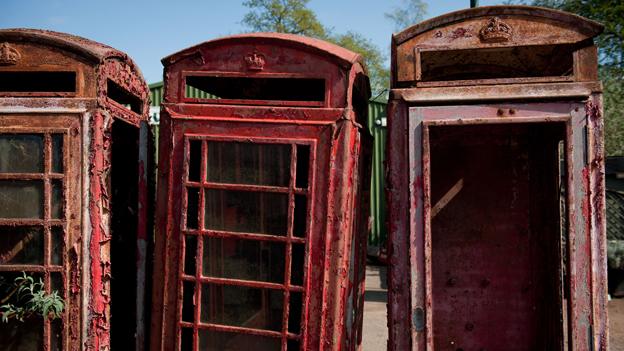Second calling: New lives for red telephone boxes
- Published

Most of the red phone boxes seen on the streets are the K6 model, known as the Jubilee Kiosk because it was designed in honour of the Silver Jubilee of King George V
The red telephone box was once a common sight across the land, a design so associated with Britishness that tourists would be as likely to pose beside one for a photo than to step inside to make a call. But with the rise of the mobile phone, the redundant kiosks are increasingly being put to inventive uses, from miniature art galleries to pint-sized pubs.
A decline in payphone usage has drastically reduced the number of phone boxes across the UK - according to BT there were 92,000 in 2002, and there are currently 46,000, including 8,000 traditional red ones.
While this is a far cry from their 73,000-strong heyday in 1980, fans will be glad to know many redundant red boxes have taken on an afterlife, ranging from the sensibly practical to the downright peculiar.

Dial S for snack: Sample a salad in central London, or quaff a coffee in Birmingham
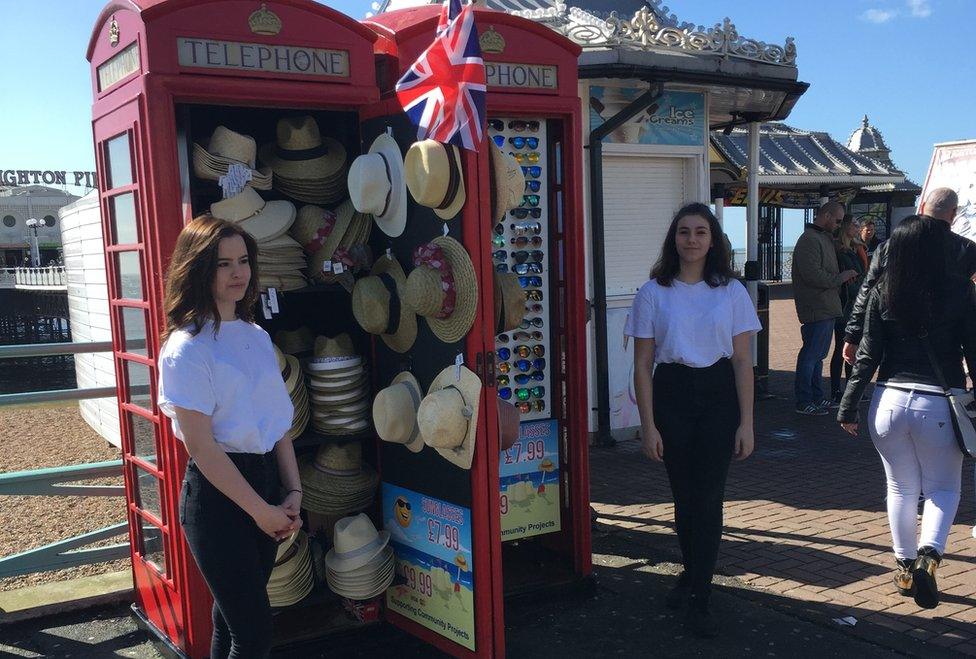
End of the pier: Selling souvenirs in Brighton
As part of BT's "adopt a kiosk" scheme, communities are able to take over a decommissioned telephone kiosk for £1.
Although new users are not allowed to install "electronic communications apparatus", 3,500 have been snapped up and put to a variety of uses.
One of the most common, especially in rural areas, is as a lending library or book exchange.
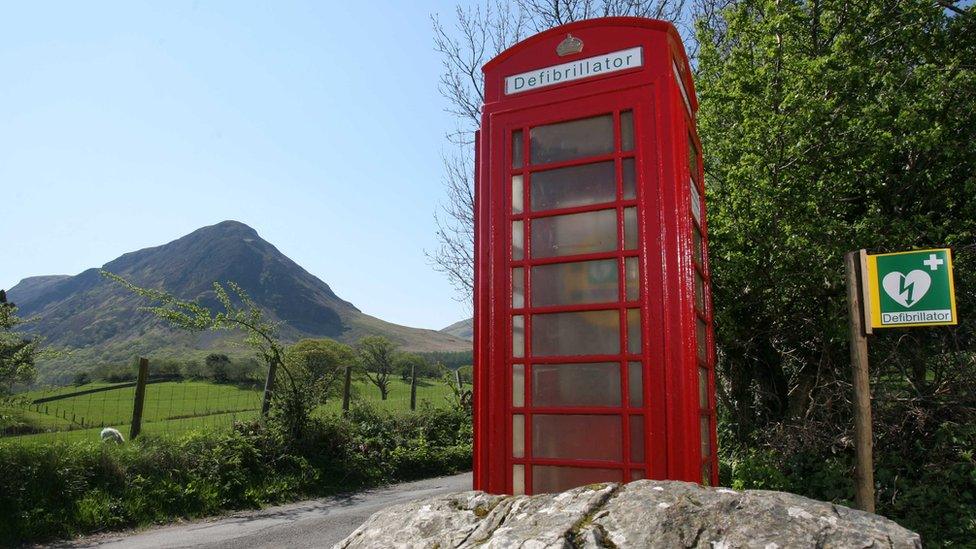
This red box in Loweswater, Cumbria, was the 3,000th to be taken over under BTs "adopt a kiosk" scheme, and now houses a defibrillator
Some have become art galleries, including a rare green kiosk in Barningham, Teesdale.
John Hay, from the village, said that when Barningham was offered the kiosk four years ago, nobody knew what to do with it.
"All that was inside it was a beer glass, a crate, half a dozen spiders and a lot of water," he said.
"I cleared it out - though I left the spiders, which I suspect are still there - and put in a Christmas tree, which must have convinced villagers I was well and truly mad."
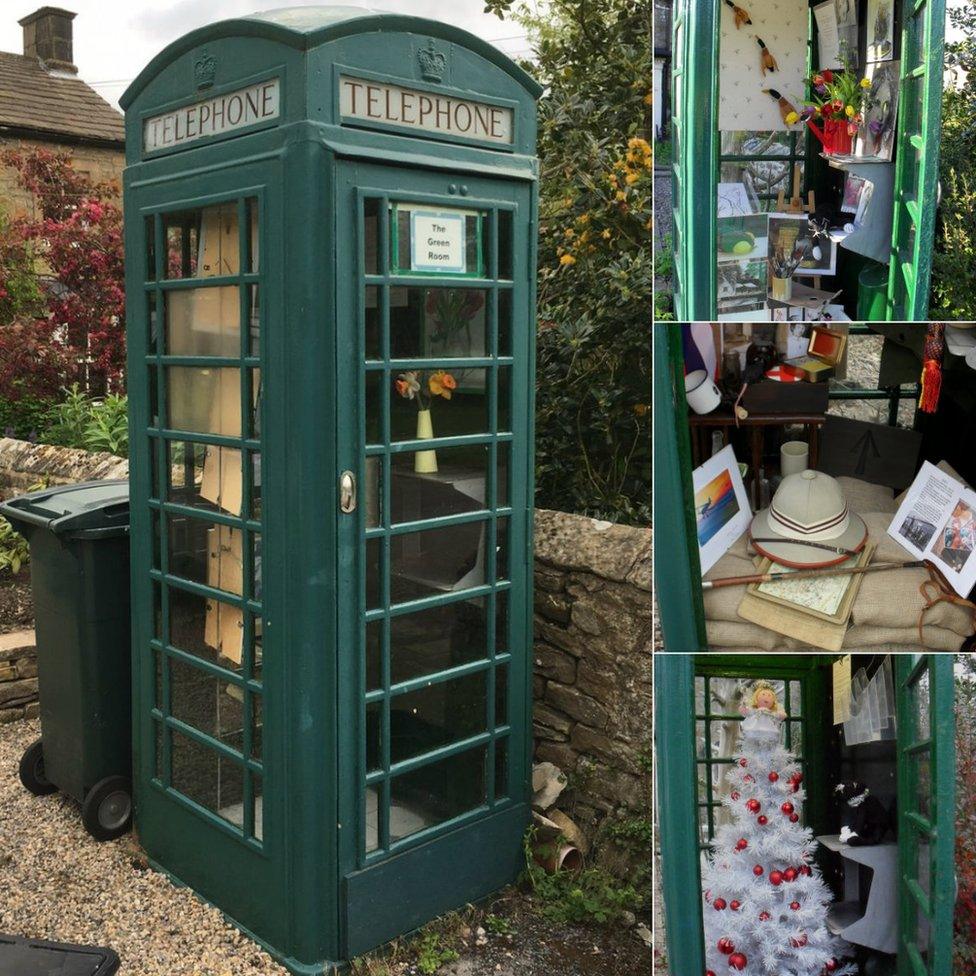
The green kiosk in Barningham has featured in an Italian travel company's brochure
It was the first of a series of regular displays, including local artworks, seasonal celebrations and a display marking the anniversary of the Battle of the Somme.
Mr Hay said: "There has been a lot of interest with passing walkers, and an Italian travel company actually put us in their brochure.
"It mentioned Buckingham Palace, and Barningham and its phone box."
In the Cambridgeshire village of Shepreth, the redundant kiosk briefly became a pub, as part of a protest at plans to turn the closed local into housing.
For one night only villagers were able to enjoy a pint at the Dog and Bone.
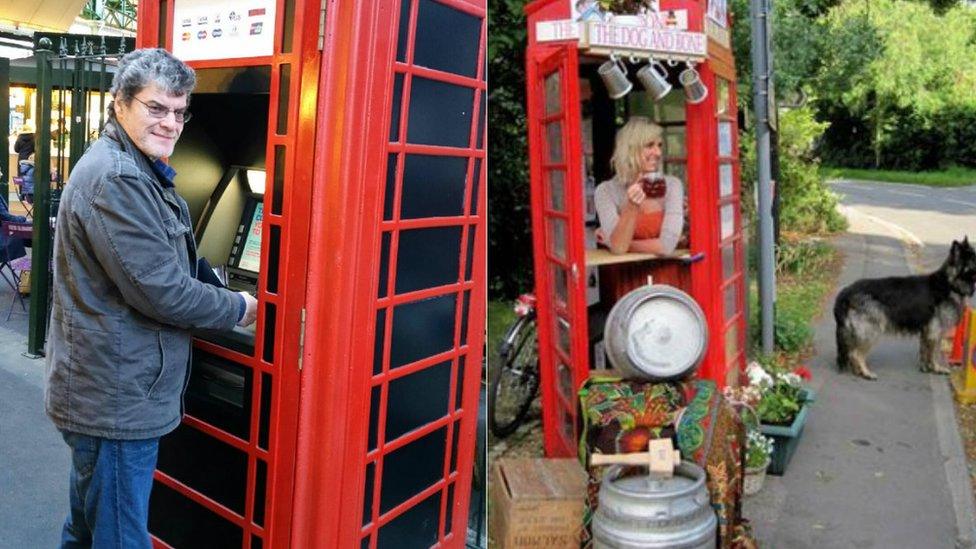
Want to withdraw a few pounds or pull a pint or two? Why not pop along to a phone box
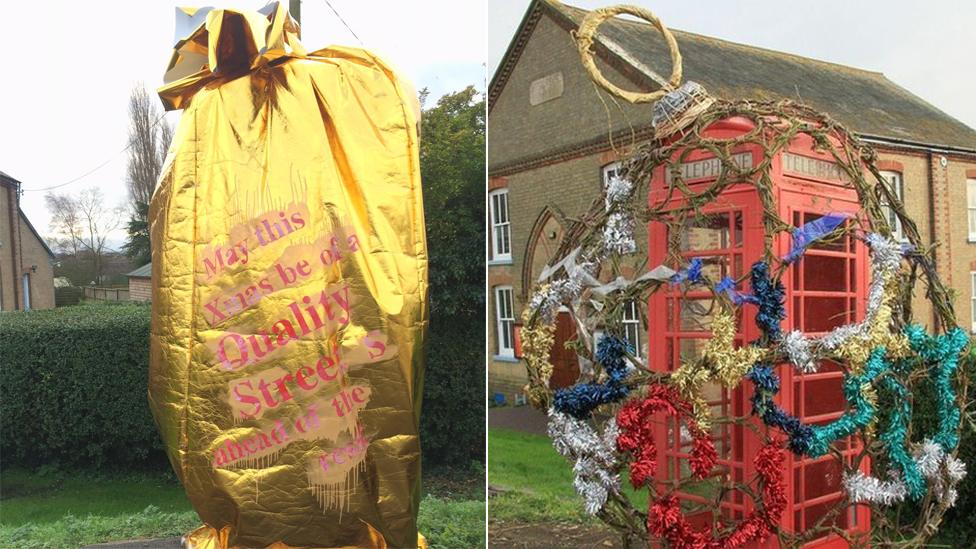
Tinsel time: The kiosk in Prickwillow, Cambridgeshire - a miniature art gallery - takes on a Christmas theme at this time of year
On the commercial front, The Red Kiosk Company leases out decommissioned phone boxes, offering the chance to "run your own business out of an iconic red kiosk".
Edward Ottewell, one of the founders, said: "One advantage of regenerating them is that they are refurbished to their original state, and their use prevents vandalism - all of our tenanted sites have had zero damage."
He said coffee shops were a popular choice, and there were now office "pods", offering access to facilities such as the internet.

Red phone box facts
Prototype was produced in concrete in 1920
In 1924 Sir Giles Gilbert Scott won a competition to design a new model
His original colour was silver, but the Post Office changed this to red
He also designed Liverpool Anglican Cathedral, Battersea Power Station, and Bankside Power Station (now the Tate Modern)
The K6 model, commissioned in 1935 to commemorate the Silver Jubilee of King George V, is the most common, with 60,000 installed
About 2,400 phone boxes have been designated as Grade II-listed buildings
They are also a familiar sight on the streets of Malta, Bermuda and Gibraltar

One of the most recent lets was to a mobile phone repair shop business in Greenwich, south-east London.
Lessee Rob Kerr, from Lovefone, said: "We've had a great response from the community, and the technician has kept his sanity working in a one-square-metre shop."
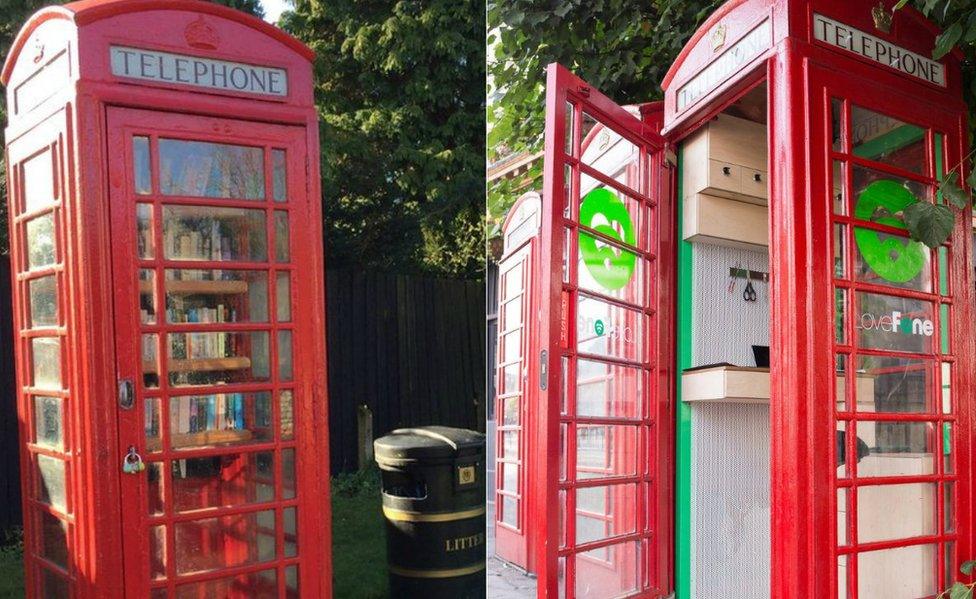
Community lending libraries are relatively common, but the mobile phone repair shop is the first of its kind
But as yet, no company seems to have taken up an idea put forward by a resident of the Northumberland village of Ovington.
When its kiosk was adopted by the parish council locals were invited to come up with suggestions as to its future use.
Among them was the world's smallest lap-dancing bar, although this was rejected in favour of a container for a defibrillator.
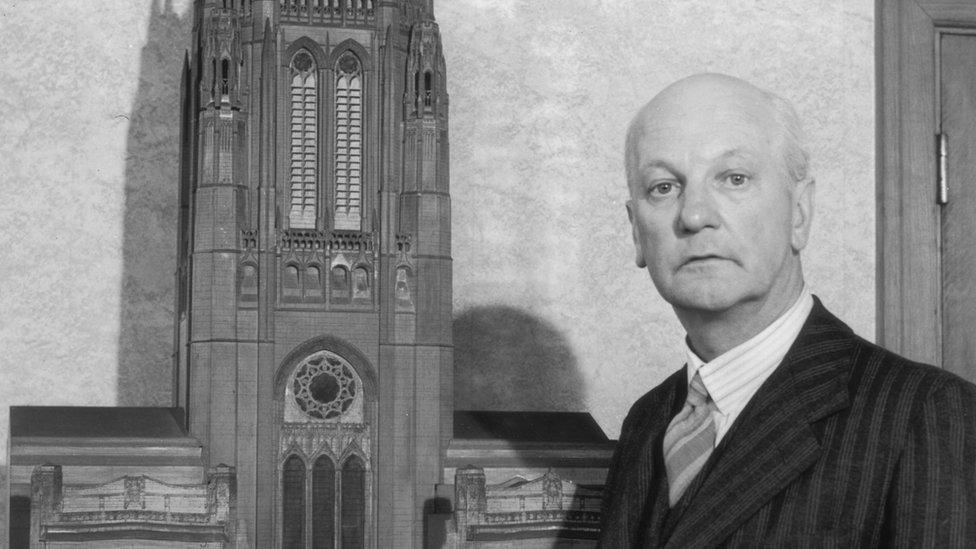
Designer Sir Giles Gilbert Scott was also responsible for Liverpool Anglican Cathedral
It is not the only one - defibrillators are now housed in more than 3,000 kiosks, due to the efforts of the Community Heartbeat Trust.
Martin Fagan, from the trust, said: "With something as serious as a cardiac arrest, time is of the essence, and, unfortunately, ambulance services often can't reach country villages in time.
"To install defibrillators in disused phone boxes is ideal, as they're often in the centre of the village, and it means the iconic red kiosk can remain a lifeline for the community."
- Published24 April 2015
